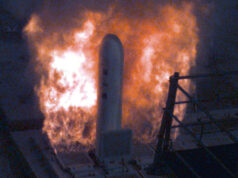NATO has released its new Joint Air Power Strategy.
The development of the strategy was initiated and directed at the political level. Its purpose, say NATO, is to provide the Alliance with an enduring direction for the future development and employment of Air Power to fulfill its core tasks – Collective Defence, Crisis Management and Cooperative Security – including further enhancing NATO’s deterrence and defence posture and international efforts to project stability.
“We welcome this new NATO Strategy as our foundation to deliver Air and Space Power for the Alliance,” said General Tod Wolters, Commander of NATO’s Allied Air Command at Ramstein, Germany.
“Air and Space power is inherently joint because although it operates in the air it creates effects and exerts influence also on land and at sea. Through the maintenance of effective Air capabilities, NATO is capable, united and determined to defend Allies in order to contribute to deterrence,” the General added.
Allied Air Command is NATO command responsible for all Alliance air and space matters. Located at Ramstein Air Base, the command – and its two subordinate Combined Air Operation Centres in Spain and Germany as well as the Deployable Air Command and Control Centre in Italy – exploits Allied Air Power’s significant strategic potential and acts as a force multiplier by enabling and enhancing other military and non-military effects.
Its main task is the peacetime mission of NATO Integrated Air and Missile Defence, a real demonstration, say the alliance, of cohesion and commitment to the collective security of its members.













